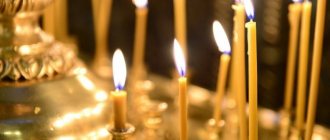Where to put the willow from last year and three signs of Palm Sunday / GoodFon Already this week, Orthodox Christians are celebrating Palm Sunday 2021. This year the holiday fell on April 25th. The day before Lazarus Saturday 2021 will take place - and already on Sunday morning people will bring willow to the church for blessing.
What does the Palm Sunday holiday mean and what not to do on Palm Sunday 2021 - read in our material When will Palm Sunday be in 2021: date, traditions and signs.
What you can cook and eat on Palm Sunday and the sixth week of Lent - read in our material What to cook on Palm Sunday: menu and delicious recipes.
Also, how to properly throw away last year's willow, is it possible to share consecrated willow and how to attract money and love on Palm Sunday - the Chief Editor found out.
Why are blessed willows kept at home?
Popular rumor attributes willow to have miraculous properties - healing and protective. But the church prescribes using a willow bouquet as a sprinkler - to sprinkle your home with holy water. In this case, holy water should be poured into special clean containers that are no longer used for any other purposes.
At the same time, consecrated willow and holy water are only a tool, and true power lies in faith in God.
As for beating yourself and others with willow branches, some priests view it as sacrilege to use a consecrated object for violent acts. However, the people have a tradition of hitting each other with willow twigs with the words: “I don’t hit - the willow hits. Willow whips you to tears"
– has taken root firmly and is practically ineradicable.
Another version of the folk saying: “Be as strong as the willow, as healthy as its roots and as rich as the earth
.
Collection, consecration and storage
Willow branches are prepared in advance. In ancient times, on Saturday afternoon, families went to the forest and to the river bank to collect the first loose branches of the willow tree. Then they were carried to the temple for consecration, which took place during the festive All-Night Vigil. This is an ancient tradition, but the willow can also be blessed during the Sunday morning service.
After the consecration, the willow bouquet was brought home and placed in the most honorable and prominent place in the house. Since ancient times, willow was kept in the home iconostasis, placed in a small vase or placed next to icons.
The main symbol of Palm Sunday is the blessed willow
Blessed shoots are kept in the house at least until the next holiday. It should be noted that if the branches sprouted while standing in the water, then they should be immediately planted in the forest or near the river.
You should know that the consecrated willow is a shrine that cannot be used in creating decorative bouquets.
What to do with last year's consecrated willow
The most reliable way is to take last year’s branches of consecrated willow to the church: they will be burned there, and the ashes from them will be left in an untrampled place.
If possible, you can burn them yourself - or float them down the river if there is one nearby.
Some people brew a decoction from such willows and wash themselves with it on Maundy Thursday. Some even make tea from them and drink them. You can also plant a consecrated willow in the ground - but do this in a place where animals do not spoil, so that they do not desecrate it.
In general, the easiest and most reliable way is to burn it (either yourself or take it to the temple).
What to do with last year's branches
Like any shrine, willows require respect. The symbol of Palm Sunday cannot be thrown away either immediately after the holiday or after a year has passed. You can get rid of old branches in the following ways:
- They are burned, fuming the living quarters and outbuildings with smoke. According to popular belief, this action will protect the household and family from various evils and diseases. Willow ash is buried in the ground, choosing a place where neither a human foot nor an animal's paw will step. The remains of the shrine can be scattered over the river.
- Some priests say that the branches can be thrown into the river bed without being exposed to fire.
- The best way to dispose of holiday willows is to take them to a church, where they will burn them after reading all the necessary prayers.
Interesting: church ministers often recall the ancient tradition of preparing a death bag, which is filled with soft willow buds, removed from old branches. This item is placed at the head of the coffin after a person dies. The priests note that the willow bag should remind a person of the hour of death.
Popular beliefs
In the Orthodox tradition, a willow branch is a reminder of an important moment in the history of Christianity. But at the everyday level, the Christian faith merged with more ancient beliefs. This mixture gave rise to many popular beliefs. These include:
- Blessed willow twigs are considered healing amulets. There is an opinion that touching him with a willow twig can significantly alleviate the condition and cure even a seriously ill person.
- Parents used willow not only as a healing tool, but also as an educational item. They believed that if a small child was not spanked too hard with a branch with soft buds, it would improve his health and make him more obedient.
- Young women wore beads made from willow buds, believing that they contributed to the rapid conception of a child and easy pregnancy.
A consecrated willow will bring health to a person if he is lightly hit with a bouquet - For men, amulets made from fluffy buds helped them in their work and protected them on long journeys.
- Decoctions and infusions were prepared from the buds of young shoots, which helped in the treatment of physical and mental ailments.
- It is believed that fumigation with smoke from burning willow and drinking a decoction from its buds helps drive out the demon from a person.
- Willows installed on windows protect the home from natural disasters.
- In rural areas, willow twigs were inserted into the roofs and walls of new houses. People believed that they would protect the house from witches and sorcerers.
- Livestock and poultry were chased by willow branches, as they protected the herds from the evil eye and disease. Domestic animals were also fed young shoots to prevent poisoning of livestock by poisonous plants.
Behavior on Palm Sunday - what should the laity not do?
There are not only mandatory rules for the behavior of the laity on holy days, but also a list of restrictions for people. By learning what not to do on Palm Sunday, you can avoid problems in life and eliminate the danger of sinful acts.
What should the laity not do on Palm Sunday?
Since fasting is observed until Easter, on Palm Sunday you should limit yourself to cold food. It is allowed to eat fish and baked goods without eggs or butter. You cannot work on this day: it should be dedicated to cleansing, communicating with loved ones and attending church. You shouldn’t quarrel or sort things out on Palm Sunday. A bright day should be spent in a good mood with a light heart.
How to decorate a willow tree with your own hands for a church?
A willow tree for consecration in a church does not require special decoration. Usually, several branches are simply collected into a bouquet and tied with thread or colored ribbon.
For consecration in the church, willows are collected in bouquets.
You can also collect a beautiful bouquet of willow twigs with male and female flowers, add to them branches of willow-like plants, for example, willow.
It is worth repeating that church ministers do not attach such great importance to the willow. Therefore, they do not have any requirements for her appearance during consecration.
When is the willow blessed in church: on Saturday or Sunday?
It is correct to consecrate the willow on Saturday at the service.
Prayer preceding the consecration of the willow.
It is correct to illuminate the willow on Saturday.
- On the eve of Palm Sunday, on Saturday evening, a festive service is held in churches - the All-Night Vigil.
- Parishioners attend with candles and willow branches.
- After reading the Gospel, the priest says a special prayer, walks around the people holding willows with a censer and sprinkles them with holy water. The Church places emphasis on the fact that it is the parishioners themselves who are sanctified and receive grace, and not the branches of the plant.
- The willow is consecrated with the words:
Prayer for the blessing of the willow tree.
Repeated sprinkling occurs on Sunday morning, after the liturgy. Usually, it is in the morning that the largest flow of people wishing to receive grace is observed. They not only fill the temple, but also line up around it. But prayer no longer precedes this sprinkling.
IMPORTANT: Priests complain that Palm Sunday has today turned from a holiday dedicated to the Lord into the day of the consecration of the willow. People flock to church not to praise Christ, to remember his wonderful deeds, but simply to sprinkle holy water on the willow twigs in their hands. Will it bring any benefit to the soul and body? Church officials have their doubts. For true grace, they advise coming to the All-Night Vigil service.
First-hand: the opinion of Father Sergius
Believers often wonder what to do with old willows on Palm Sunday. And of course, there is a desire to hear the opinion of the church itself - what to do, and what does Orthodoxy think about this?
Here is an example of Father Sergius’ answer on one of the Orthodox forums. The idea essentially corresponds to the ideas described above. The holiday willow is not trash, so you shouldn’t throw away last year’s willow as regular waste. You can burn the twigs or simply float them down the river.
Thus, you shouldn’t just throw away the willow from last year, regardless of which branch we are talking about - consecrated or unconsecrated. After all, this is not just brushwood or twigs for decoration, but a symbol of the holiday.
And the fact that you brought them into the house speaks about your attitude towards Palm Sunday - you want to come into contact with the ancient tradition. Therefore, it is better to maintain your complacent mood until the end and send the willows, for example, along the river. Moreover, you can take a walk!
How to consecrate willow at home?
Having blessed the water for Epiphany, many think that now with its help they themselves will be able to consecrate anything, even Easter cakes, dyes and willows. “Informed” women know the descriptions of the rituals, and they are also available on the Internet.
- In theory, the willow at home can be consecrated by the person who, for good reason, is not present in the temple.
- A woman cannot perform the ceremony during menstruation.
- To carry out the consecration, in addition to the willow itself, you will need holy water. They sprinkle it on the willow, saying the same words as the priest in the church.
There is an opinion that you can consecrate the willow at home yourself.
The clergy do not agree with him. Priests believe that there is nothing wrong with sprinkling willow at home with holy water. But this rite has nothing to do with real consecration.
How many willow branches should be in the house for the holiday?
After the service, the consecrated willow should not be distributed to anyone. If a person wants to bless branches for those who were unable to attend the service, it is advisable to collect a separate bouquet.
According to the clergy, there should be any odd number of willow branches in the house on Palm Sunday, or as many as there are people in the family. Upon arriving home from church, one must symbolically lash all family members with a blessed willow. It is believed that in this way people are wished good health.
What to do with the old willow after Palm Sunday
Of course, not everyone will consider it necessary to keep willow branches from last Palm Sunday in the house. What to do, how to deal with old willow branches? You shouldn’t just throw them away, that is, like regular garbage. Willow branches are a symbol of the holiday, and not just an ordinary plant or, especially, brushwood.
Here are a few ways to dispose of old branches after Palm Sunday:
- They are taken to nature - preferably to a river, so that no one can trample on them.
- You can simply burn the branches, but scatter the ashes somewhere in nature so that no one walks on them.
- What if the twig gives roots? So much the better - you can simply plant it in your summer cottage. If it takes root, someday you will be able to take your own willows every year.
NOTE
Most of us are unlikely to be able to simply throw away, for example, bread. Many people prefer to make crackers from old baked goods or give them to the birds. The story with the willow is in many ways similar: bread is a symbol of prosperity, harvest (and for believers it personifies the body of Christ). The willow is a symbol of the holiday, the entry of the Savior into Jerusalem.










